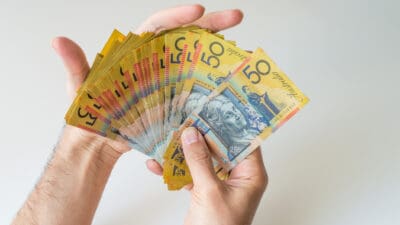Investors in the Vanguard Australian Shares Index ETF (ASX: VAS) would be a happy bunch right about now, I'd wager. It was only back in late October that VAS units were going for under $83.50 each. But at the close on Thursday, those same units were priced at $95.63.
This means that investors in this popular exchange-traded fund (ETF) have enjoyed more than a 14% unit price appreciation in just four months. Investors can also add another approximately 0.76% to that return as a result of VAS's December dividend distribution.
Index fund aficionados might notice that this stonking gain is well outside the norms of what VAS investors usually achieve. After all, ETF provider Vanguard tells us that VAS units have averaged a return of 9.03% per annum (with dividends reinvested) since its ASX inception in 2009. That's as of 31 January.
That's the average return for 12 months, not four. So we've witnessed a very lucrative window for this index fund indeed.
So what can explain this super-sized return that the Vanguard Australian Shares ETF has enjoyed since October last year?
How have VAS units returned 14% in four months on the ASX?
Well, to answer that, let's do a refresher on how an index fund like this works. Index funds work by closely tracking an underlying index and replicating its holdings and allocations. Hence the name.
In VAS's case, the index employed is the S&P/ASX 300 Index (ASX: XKO).
The ASX 300 holds the largest 300 shares on the Australian share market, weighted by market capitalisation. That's everything from Commonwealth Bank of Australia (ASX: CBA), Woolworths Group Ltd (ASX: WOW) and Telstra Group Ltd (ASX: TLS) to JB Hi-Fi Ltd (ASX: JBH), Ampol Ltd (ASX: ALD) and Harvey Norman Holdings Limited (SX: HVN).
Because it is weighted by market capitalisation, the larger shares (such as CBA) have more weighting and influence in the index, and thus the ETF, than the smaller ones (like Ampol).
Given that the Vanguard Australian Shares ETF merely tracks the ASX 300 Index, it won't be too surprising to learn that the ASX 300 Index has also returned around 14% since October last year. So it would have been very strange if VAS units didn't return something similar.
These returns can be further explained by a look at how the most influential shares in the ASX 300 Index, and the VAS ETF, have performed over this period.
Take the CBA share price. It's up more than 20% since the end of October. The other big four bank shares have all returned a similar result. Whilst the CSL Ltd (ASX: CSL) share price is up almost 24%.
So given how some of the largest shares in the ASX 300 have performed in recent months, it's easy to see why the Vanguard Australian Shares ETF has followed suit.









